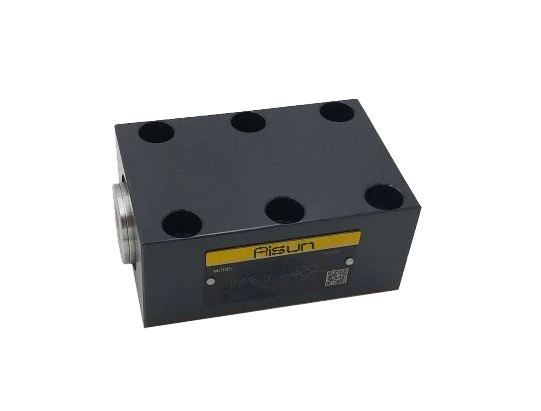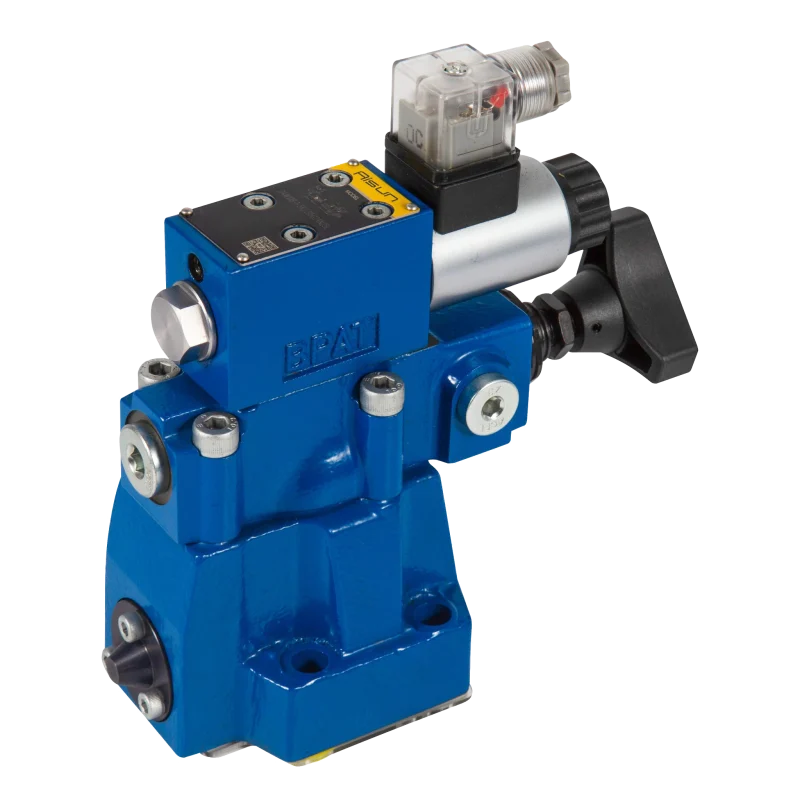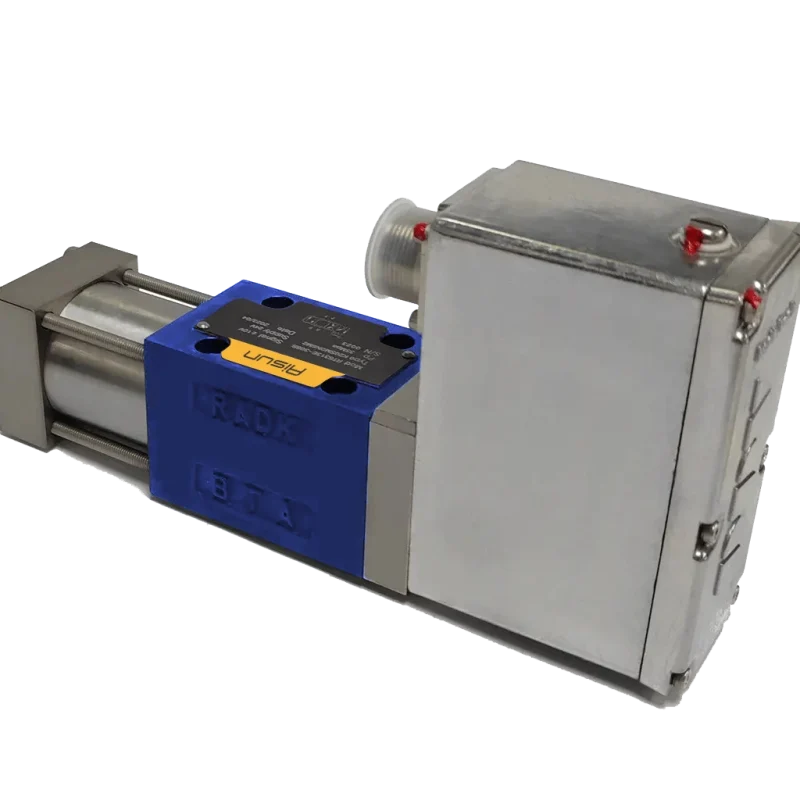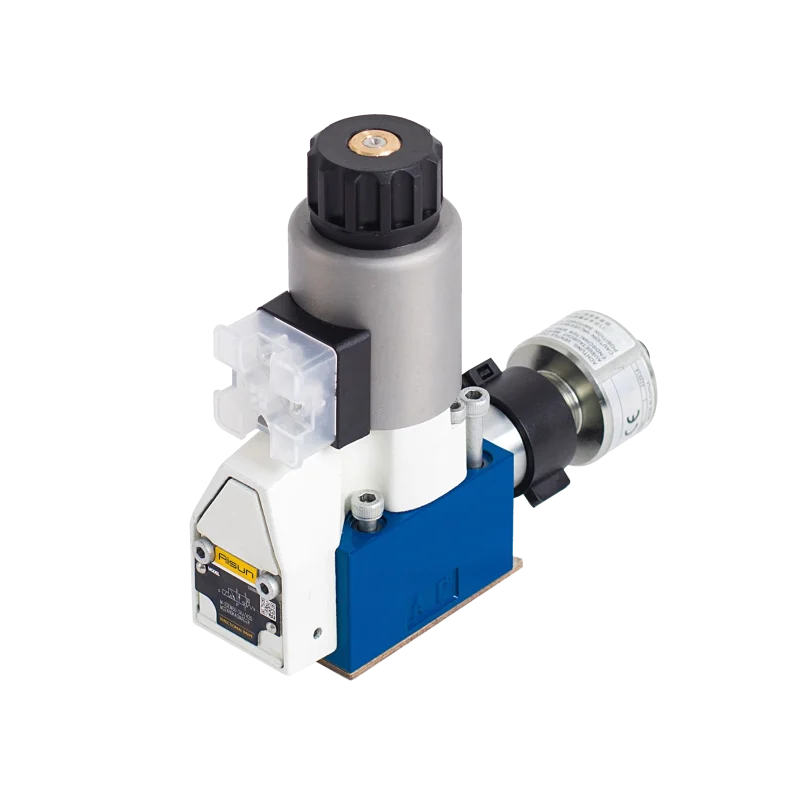hydraulic flow control MG & MK
MG and MK are two common types of hydraulic flow control valves used in various hydraulic systems to control the flow of fluid. These valves regulate the flow rate and, in some cases, the direction of fluid to actuators such as cylinders and motors, ensuring that the system operates efficiently and safely. While the specific models might vary depending on the manufacturer, the MG and MK valves generally follow similar principles. Below is an explanation of both types of valves.
1. MG Flow Control Valve:
The MG series of flow control valves are typically manual flow control valves. They are used to regulate the flow rate of hydraulic fluid, allowing users to control the speed of hydraulic actuators such as cylinders or motors. These valves are often designed for adjustable flow rates, providing precision in controlling the speed of an actuator.
Key Features of MG Flow Control Valves:
- Manual Adjustment: The flow rate in an MG valve is typically adjusted manually by the operator, using a handwheel, knob, or lever to set the desired flow.
- Flow Regulation: These valves are primarily used for controlling the flow of fluid to a hydraulic component, like a cylinder or motor, by adjusting the size of an orifice through which the fluid passes.
- Pressure Compensation (Optional): Some MG valves come with pressure compensation to maintain a constant flow rate regardless of changes in load pressure. This ensures that the flow rate remains consistent even as the resistance of the load (such as a cylinder) changes.
- Port Configuration: The valve often features a two-port configuration: one port for the inlet (P) and one port for the outlet (T), with adjustable flow between them. The flow is usually controlled in one direction, but variations exist for bidirectional flow control.
- Simple Design: MG valves tend to have a relatively simple design and are often used in applications where the flow rate needs to be set and then held constant.
Applications of MG Flow Control Valves:
- Cylinder Speed Control: MG valves are frequently used in hydraulic systems to control the speed of single-acting or double-acting cylinders, ensuring smooth and adjustable extension and retraction speeds.
- Machine Tool Applications: In machine tools, these valves regulate the speed of actuators to maintain precise operations.
- Material Handling: Used in material handling equipment where precise control of hydraulic speed is needed.
2. MK Flow Control Valve:
The MK series of flow control valves are usually pressure-compensated flow control valves. These valves are designed to maintain a constant flow rate, even when the load pressure changes. This makes them ideal for applications where fluid pressure varies, but a constant speed of actuators is still needed.
Key Features of MK Flow Control Valves:
- Pressure Compensation: The MK valve is typically pressure-compensated, meaning that the flow rate will remain constant regardless of variations in the system pressure or load. This is critical in systems where the load pressure can change due to varying resistance, such as in hydraulic cylinders or motors.
- Adjustable Flow: The valve allows the user to set the desired flow rate, but unlike basic flow control valves, the MK valve maintains this rate under changing pressure conditions.
- Variable Flow: MK valves are designed to adjust flow based on the system’s pressure. As the pressure rises or falls, the valve compensates to maintain the preset flow rate.
- Built-in Relief Valve: In some models, MK flow control valves may include an internal relief valve that prevents excessive pressure build-up, adding an additional layer of safety to the system.
- Ports: Like the MG valve, the MK valve often has two or more ports. However, the MK valve may also include additional ports for pressure relief or bypass, depending on the design.
Applications of MK Flow Control Valves:
- Hydraulic Cylinders with Variable Load: These valves are widely used in applications where cylinders or motors operate under variable load conditions. By maintaining a consistent flow rate, the MK valve ensures the actuator speed remains constant regardless of changes in load.
- Precision Control: In applications requiring precise control of actuator speeds, such as in aerospace, automotive testing, and robotics, MK valves provide stable flow regulation.
- Material Handling and Industrial Equipment: The MK valve is often used in material handling systems where the flow rate must remain constant to ensure smooth operation of lifts, conveyors, or presses.
Differences Between MG and MK Flow Control Valves:
- Pressure Compensation: The most significant difference between the MG and MK valves is that the MK valve is pressure-compensated, meaning it automatically adjusts the flow to maintain a constant rate even if the pressure in the system changes. The MG valve, on the other hand, typically does not include this feature unless explicitly designed for it.
- Manual vs. Automatic Adjustment: The MG valve typically requires manual adjustment for setting the flow rate, whereas the MK valve compensates for pressure changes and automatically maintains the set flow, making it more suited for variable load conditions.
- Application Complexity: MK valves are often used in more complex hydraulic systems where precise, stable control is critical, while MG valves are simpler, typically employed in systems where flow does not need to compensate for varying load pressures.:
- MG Flow Control Valves are typically used for simpler, manual flow regulation in hydraulic systems where pressure variations are not a significant concern, or where the operator can compensate for changes manually.
- MK Flow Control Valves, on the other hand, are used when it is essential to maintain a constant flow rate under changing pressure conditions, thanks to their built-in pressure compensation feature. These valves are more commonly used in advanced hydraulic systems where actuator speeds need to be stable regardless of pressure fluctuations.
Both types of valves play an essential role in hydraulic circuits, ensuring efficient and precise control of fluid flow, but they are suited to different needs depending on the complexity and requirements of the hydraulic system.
Flow Control Valve MG & MK
In the field of hydraulic engineering, precise control over fluid flow is paramount for ensuring optimal performance. The MG and MK valves, as restrictive valves, play a crucial role in achieving this control. With a strong emphasis on oil pressure and viscosity, these valves provide a reliable solution for controlling fluid flow in hydraulic systems. This article will delve into the design intricacies, operational mechanisms, and various applications of the MG and MK valves, highlighting their significance in hydraulic engineering.
Restrictive Valve
The MG model is specifically designed as a restrictive valve capable of throttling fluid flow in both directions. Its design features a side hole (3) through which hydraulic oil passes, reaching the throttling orifice (4). This critical component is formed by the valve body (2) and the adjusting sleeve (1).
Similar to the MG valve, the MK valve is another exemplary restrictive valve utilized in hydraulic systems. It shares a common focus on oil pressure and viscosity, ensuring accurate control over fluid flow.





